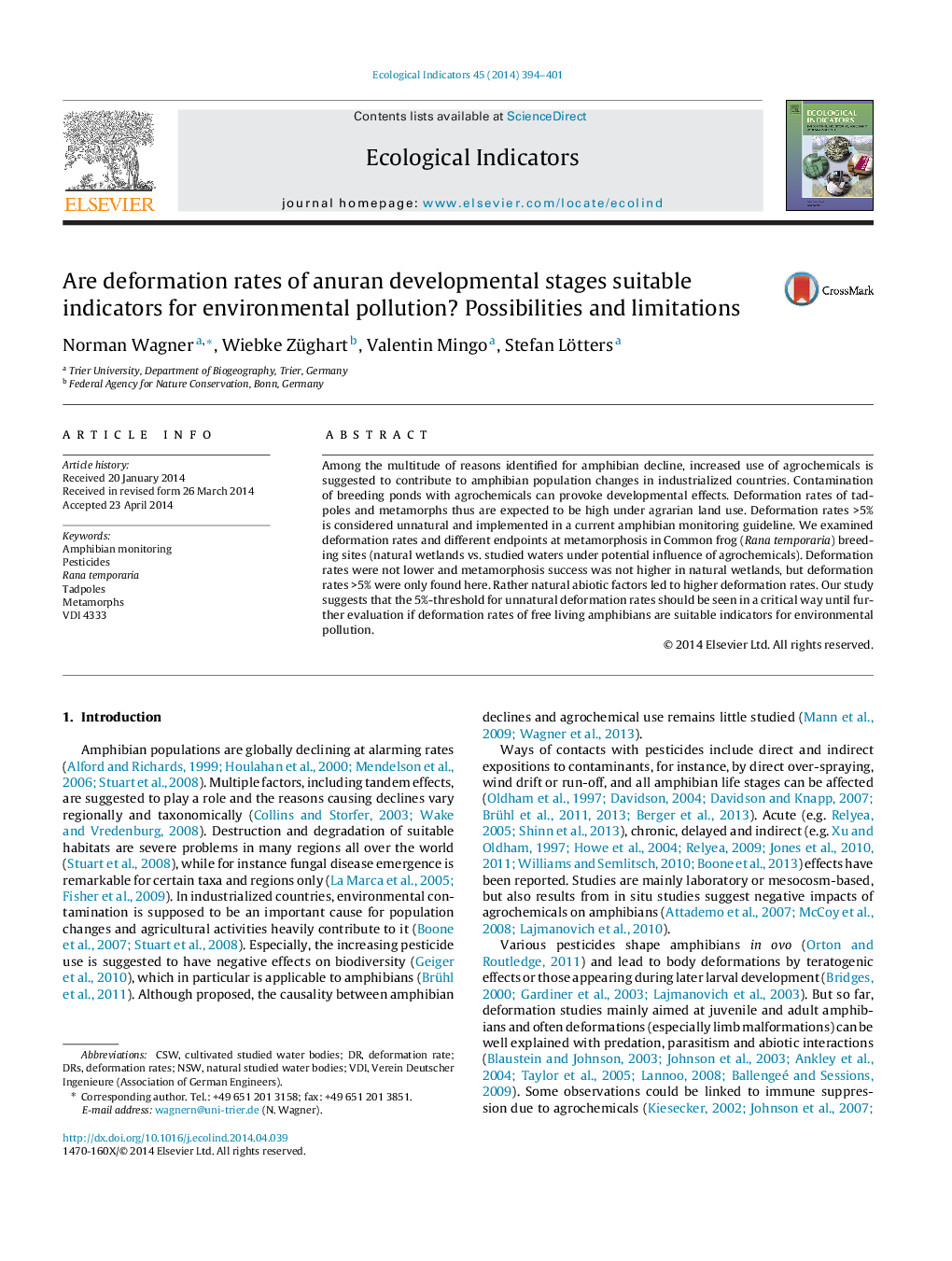| Article ID | Journal | Published Year | Pages | File Type |
|---|---|---|---|---|
| 4373080 | Ecological Indicators | 2014 | 8 Pages |
•We examined deformations in anurans at different distances to agricultural land.•More malformed larvae were found in natural wetlands than in agricultural areas.•Agricultural land use affected other biological parameters in metamorphs.•‘Unnatural’ deformation rates >5% were found in larvae from natural wetlands only.•The 5%-threshold should be critically evaluated.
Among the multitude of reasons identified for amphibian decline, increased use of agrochemicals is suggested to contribute to amphibian population changes in industrialized countries. Contamination of breeding ponds with agrochemicals can provoke developmental effects. Deformation rates of tadpoles and metamorphs thus are expected to be high under agrarian land use. Deformation rates >5% is considered unnatural and implemented in a current amphibian monitoring guideline. We examined deformation rates and different endpoints at metamorphosis in Common frog (Rana temporaria) breeding sites (natural wetlands vs. studied waters under potential influence of agrochemicals). Deformation rates were not lower and metamorphosis success was not higher in natural wetlands, but deformation rates >5% were only found here. Rather natural abiotic factors led to higher deformation rates. Our study suggests that the 5%-threshold for unnatural deformation rates should be seen in a critical way until further evaluation if deformation rates of free living amphibians are suitable indicators for environmental pollution.
